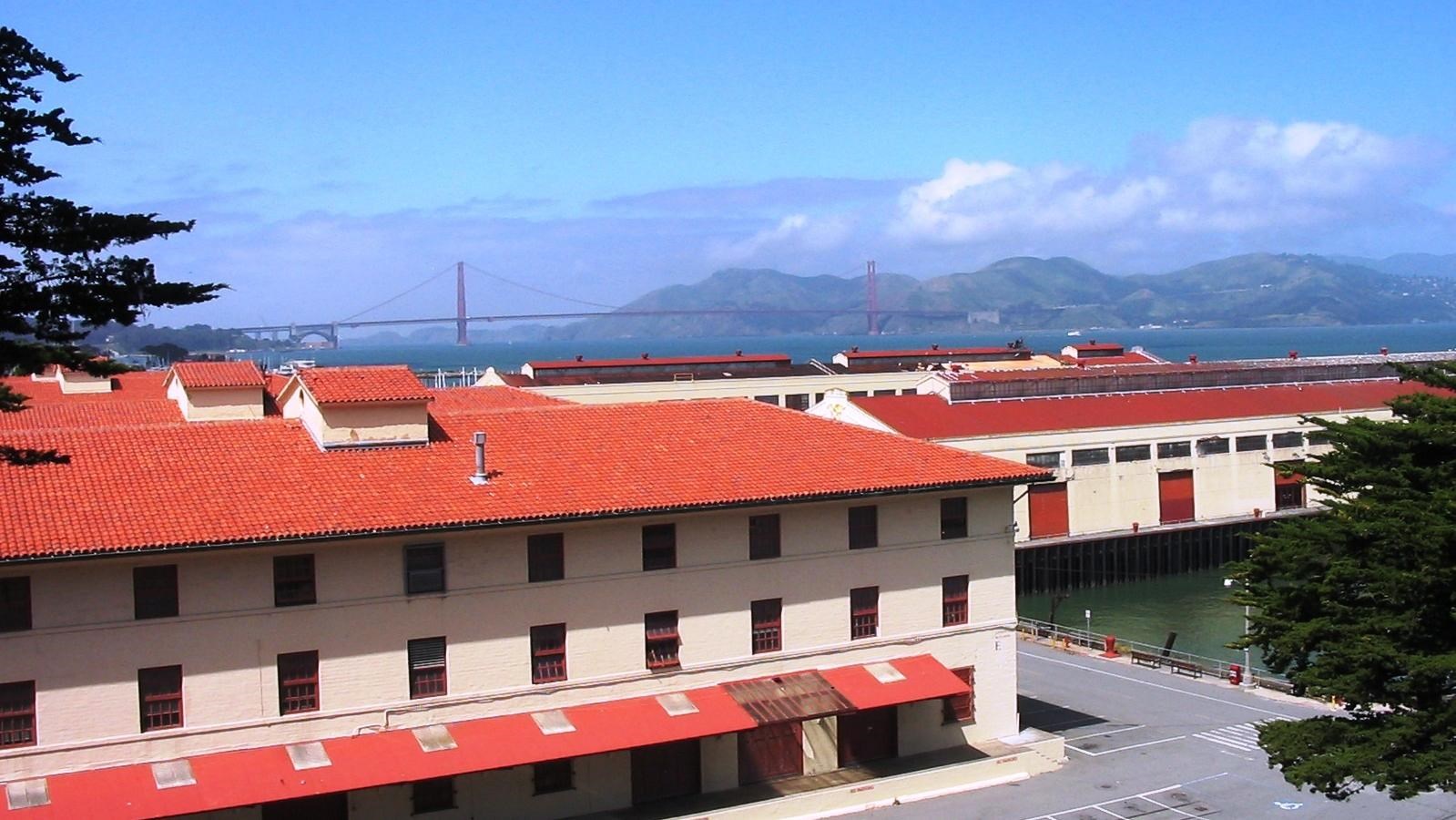Last updated: September 3, 2020
Place
Fort Mason Historic District

Photo by SuperJumbo, CC BY-SA 3.0, https://commons.wikimedia.org/w/index.php?curid=4549474
Although Fort Mason was originally established as a coastal fortification in the 1860s, it is best remembered as headquarters of the San Francisco Port of Embarkation between 1910 and 1963. During World War II, Liberty ships built in Bay Area shipyards were constantly ferrying troops to the immense pier and dock system at Lower Fort Mason, ultimately transporting 1.6 million troops and 23 million tons of cargo to the Pacific theater through the port administered facilities. New York Times Magazine commented at the time that, "This port has one main commodity to send abroad. It is exporting war." "From the early days of the campaigns in the Southwest Pacific, when men and supplies available to reinforce our position were but a trickle, to the time when with added resources we were enabled to mount offensive operations with increasing violence," wrote General Douglas MacArthur, the U.S. Army's San Francisco Port of Embarkation and its subsidiary Oakland Army Terminal, "gave magnificently of their full support--support which in no small measure contributed to the victorious march which carried our arms to the heart of the Japanese Empire."
Lower Fort Mason is a large complex of warehouses and piers, built between 1910 and 1914 to supply Army bases across the Pacific. Their red-tiled roofs and white stucco facades evoke Spanish Colonial architecture on a grand scale. Lower Fort Mason is now the Fort Mason Center, serving the community as a cultural center and office space for non-profit organizations ranging from theaters and ethnic museums to art galleries and environmental advocacy groups. It is this section of Fort Mason , known as San Francisco Port of Embarkation, U.S. Army, that has been designated a National Historic Landmark.
By contrast, Upper Fort Mason features dozens of smaller-scale historic buildings, among them the former Port of Embarkation Headquarters (1902), now Golden Gate National Recreation Area Park Headquarters; the Mission Revival-style Chapel; Civil War-era barracks now occupied by the San Francisco International Youth Hostel; and McDowell Hall (1855), once home to commanding officers and, until very recently, the Officers' Club (1943-2003). The Construction Quartermaster's Office and the Post Headquarters building (FM101) was constructed on the eve of America's entry into World War II, and amidst other changes, an additional group of seven sets of officers' quarters was added to the southern portion of Fort Mason around 1941.
Fort Mason is located between Fisherman's Wharf and the Golden Gate Bridge on San Francisco Bay, in San Francisco's Marina district. The entrance to Fort Mason Center is at the intersection of Marina Blvd. and Buchanan Street. For further information please visit the Fort Mason Center's website.
Discover more history and culture by visiting the World War II in San Francisco Bay Area travel itinerary.
